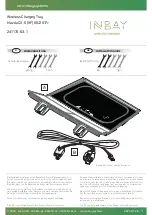
Additional Safety Information
The seat belts and airbags are
obviously important parts of
your occupant protection
system.
In addition, you should know
that sitting upright, adjusting the
head restraint properly, locking
the doors, and stowing things
properly can also increase your
safety and possibly even save
your life.
Seat-Back Position
The seat-backs should be in an
upright position for you and your
passengers to get the most
protection from the seat belts.
If you recline a seat-back, you
reduce the protective capability
of your seat belt. The farther a
seat-back is reclined, the greater
the risk that you will slide under
the belt in a severe crash and be
very seriously injured.
For information on how to adjust
the seat-back, see page
48
.
Head Restraint Position
Head restraints can help protect
you from whiplash and other
injuries. For the best protection,
adjust the top of the restraint so
it is even with the tops of your
ears, or as high as possible. For
instructions on adjusting the
head restraints, see page
49
.
Door Locks
It is not safe to leave your car
doors unlocked. A passenger,
especially a child, could open a
door and accidentally fall out.
Also, there is a greater chance of
being thrown out of the car
during a crash when the doors
are not locked.
Storing Cargo Safely
Before you drive, make sure you
first securely store or tie down
any items that could be thrown
around the car and hurt
someone or interfere with your
ability to operate the controls.
Do not put any items on top of
the tonneau cover. They can
block your view, and they could
be thrown about the car in a
crash.
Driver and Passenger Safety
















































